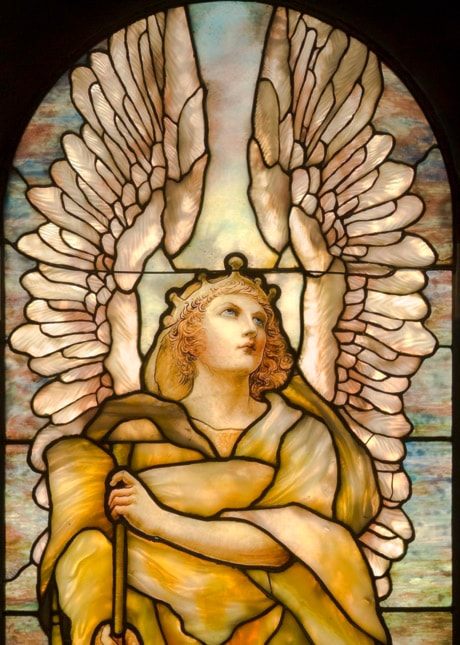MONTREAL — Exquisite Tiffany glassworks will light up a varied year at Montreal’s Museum of Fine Arts, which will also host shows in 2010 looking at the legacy of jazz great Miles Davis and the raw, soul-searing artwork of German painter Otto Dix.
The decision to mount the Tiffany show was simple, said Nathalie Bondil, the museum’s director and chief curator, since historic, restored windows acquired from a Montreal church by the museum will be a large part of the exhibition.
“We conceive many exhibitions but we are always asking for loans,” she said in an interview. “For (this) case we are lucky, because we had these masterpieces in our collection.”
The museum says the exhibit will be the first of its kind in Canada on the work of the renowned American designer, who lived between 1848 and 1933. It will focus on Louis Comfort Tiffany’s groundbreaking contribution to glass design and technology.
Tiffany Glass: A Passion for Colour runs Feb. 12 to May 10 and will consist of 180 works, including windows, vases, lamps, jewelry, and mosaics. Favourite Tiffany motifs such as wisteria blossoms, dragonflies and magnolias will all be on display.
Besides letting museum visitors get a unique perspective on the Tiffany works — most of the stunning windows were usually too high up in their original settings to allow people to get a close look at the craftsmanship — the show will shed light on the techniques used to create such incredible effects.
“If you consider the iconography and all the religious iconography, these images are not so original,” Bondil said. “ But, in terms of techniques, the three-dimensional aspect of each window is really spectacular.
“You can consider each piece like a piece of sculpture and this aspect could be understood only if you see the work,” she said. “It’s really because he was so innovative and so inventive in terms of glass technique that he completely made a revolution in this field.”
Rosalind Pepall, senior curator of decorative arts, said the techniques included the use of drapery glass, which was rolled and crinkled on a hot iron table to give a three-dimensional effect; confetti glass (tiny bits of coloured glass sprinkled in to give an abstract quality) and ripple effects, to make glass look like water.
“You can almost see the medium flowing, you can almost see the movement of it, even though the piece is totally static,” said Pepall.
“That’s what I find is extraordinary. I find myself in front of these pieces and you’re just mesmerized by the different reflections, the colour and this idea of movement in a static object.”
She noted that the Tiffany windows could have up to seven layers of glass superimposed in one tiny section to create an effect.
“He would have five different pieces of glass to vary the tone of the water, so one piece of glass would have green in it, the next one would be blue, the next one would have little purple flecks in it, the next one would have the rays of the sun (depicted) on it. And he put it all together.”
The exhibit will concentrate on six themes, including Tiffany’s early career, his trips to Europe where he studied painting and his growing interest in the art of glass-making.
Also examined are his relationship with Paris art dealer Seigfried Bing, who helped promote Tiffany’s products in Europe; Tiffany’s stained-glass windows; his striking and organically shaped “Favrile” vases and the expansion of his firm, which included production of the popular lamps.
“Tiffany never made glass by himself,” Bondil noted. “He was not a craftsman but he was a designer. He was the artistic director for each creation.”
Pepall echoed that, saying, “It’s like any big production.
“There’s the director who provides the artistic vision and pushes people to do what he wants but he had really good people under him as well. He had the top specialists in their different fields and I think that’s why he was such a big success as well.”
Not that the others’ names were widely touted.
“He had a lot of people working for him but he basically always took the credit for everything,” Pepall observed.
While Tiffany did have his heyday, his star faded as the world embraced the more sober and restrained neo-classical style and moved away from his colourful, decorative art. But he benefited from a resurgence of interest in the 1950s and has remained fixed in the public mind as an innovator since.
Miles Davis: Jazz Legend will follow on April 30 to Aug. 29, with Otto Dix running from Sept. 24 to Jan. 2.
The multimedia Davis show follows up on the museum’s explorations of the links between visual arts and music, which started with such shows as Warhol Live and Imagine, which looked at John Lennon and Yoko Ono.
The Dix exhibition will highlight more than 100 works, including his Portrait of the Lawyer Hugo Simons, which is part of the museum’s permanent collection.
